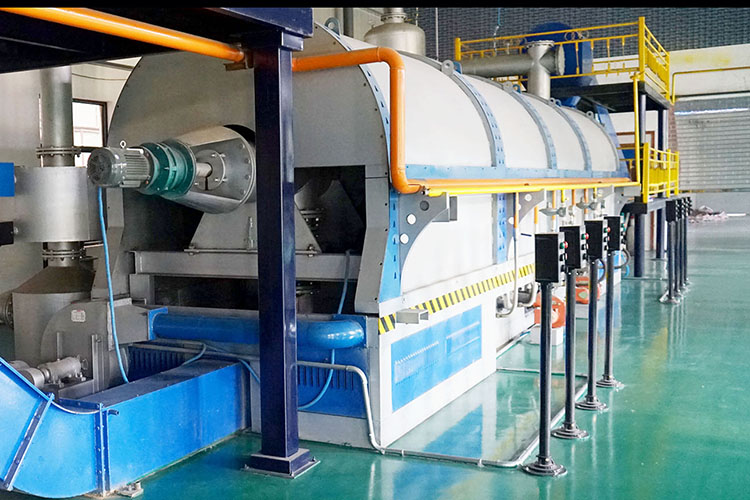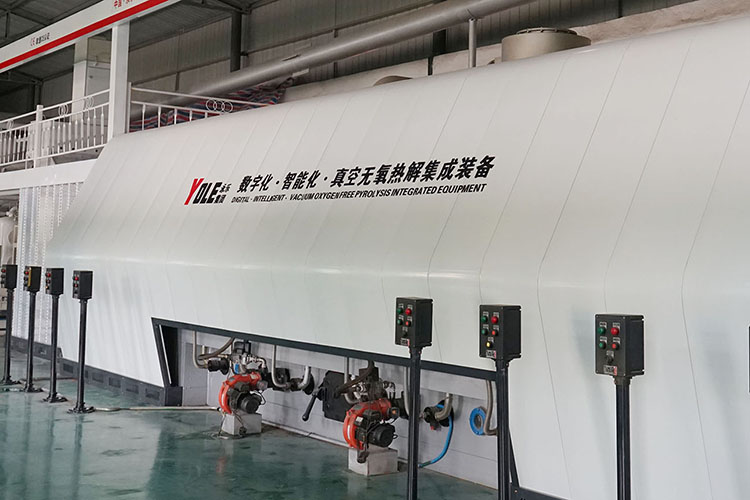Waste tire refining equipment is an efficient and environmentally friendly resource utilization device that can convert waste tires into renewable energy. Its main products include fuel, carbon black, and steel wire. The core of this equipment lies in its rational design and efficient operating system, with the incinerator playing a crucial role as a key component in the entire process flow. The performance of the incinerator directly affects the efficiency, product quality, and environmental protection level of the entire system.

The main function of an incinerator is to provide thermal energy support for refining equipment. In the process of refining waste tires, thermal cracking is a key physical and chemical reaction that requires a high-temperature environment to decompose the organic components in the waste tires into gaseous or liquid combustible substances. These combustible substances are cooled by a condensation system to form fuel, while residual carbon black and steel wire are separated and recovered. The incinerator provides a stable and controllable high-temperature environment for this process, while ensuring efficient and continuous energy supply through scientific combustion design.
The incinerator of modern waste tire refining equipment is usually made of high-temperature resistant materials, which have excellent insulation performance and durability. The temperature inside the furnace can be stably maintained between 400 ℃ and 600 ℃, which is the optimal working temperature for thermal cracking reactions. Incinerators are usually equipped with intelligent temperature control systems to monitor and adjust the combustion status in real time, avoiding a decrease in production efficiency caused by overheating or insufficient temperature. In addition, the temperature control system can effectively reduce fuel waste, thereby lowering operating costs.

The fuel sources for incinerators are diverse, mainly including combustible gases generated during the cracking process, coal, natural gas, and other biofuels. Among them, combustible gas is a byproduct generated during the cracking process, which can be directly introduced into the incinerator as fuel through a reasonable gas recovery system. This "self powered" design greatly improves energy utilization efficiency, making the operation of the entire equipment more economical and environmentally friendly.
To ensure that the emissions from the incinerator meet environmental standards, advanced equipment is equipped with a multi-stage purification system during the combustion process. Waste gas is usually treated through multiple steps such as desulfurization, denitrification, and dust removal before being discharged to reduce the impact of harmful substances on the environment. For example, by installing electrostatic precipitators or bag filters, particulate matter in flue gas can be effectively captured, while desulfurization devices can remove acidic gases such as sulfur dioxide, further reducing air pollution.
The design of the incinerator also considers operational safety. Usually, these devices are equipped with explosion-proof valves, safety locking devices, and online monitoring systems, which can automatically alarm and take corresponding measures in case of abnormal situations to ensure the safety of equipment and personnel. At the same time, furnace design focuses on optimizing air flow, and through reasonable distribution of air inlets, fuel combustion is more complete, further improving thermal efficiency and reducing the generation of pollutants.

In addition, the maintenance of the incinerator is also relatively convenient. The application of high-temperature resistant materials extends the service life of the furnace, while modular design makes it easier to disassemble and clean various parts of the furnace body, reducing equipment downtime and maintenance costs.
In summary, as the core component of waste tire refining equipment, the incinerator's high efficiency, environmental friendliness, and safety performance play a decisive role in the operation of the entire system. In the process of resource utilization of waste tires, incinerators are not only the key to energy conversion, but also reflect the attention of modern industrial equipment to environmental protection and sustainable development. Through continuous technological improvements, incinerators and their supporting equipment will provide a more ideal solution for the green treatment of waste tires.
Yongle Environmental Protection is mainly engaged in the research and development, production and sales of complete sets of technical equipment for organic solid waste disposal and comprehensive utilization. Production and manufacturing, domestic waste treatment equipment, tire pyrolysis equipment, medical waste disposal equipment, hazardous waste disposal equipment, and achieve efficient and comprehensive utilization of resources through independently developed low-temperature anaerobic pyrolysis equipment technology solutions.
Tags:Introduction to Incinerator for Waste Tire Refining Equipment,Incinerator for Waste Tire Refining Equipment,YONGLE GROUP
 Latest news
Latest news


























